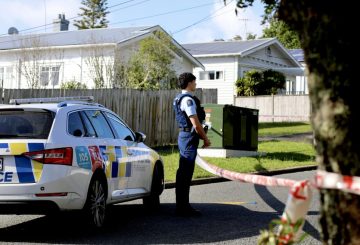고구마의 일종인 쿠마라 (Kūmara) 가 사이클론 가브리엘에 의해 많은 농작물이 파괴된 후 다시 돌아오고 있습니다.뉴질랜드의 거의 모든 쿠마라는 따뜻한 기후와 비옥한 토양이 이상적인 노스랜드에서 재배됩니다.하지만 폭풍으로 인해 땅속 농작물의 대부분이 썩고 말았다.최악의 경우 일부 쿠마라 가격은 킬로그램당 14달러에 달하기도 했습니다.
이제 새 시즌의 오렌지, 골드, 레드 쿠마라가 슈퍼마켓으로 돌아왔습니다.북섬 식품 생산 및 도축장 책임자인 브리짓 코슨은 붉은 쿠마라가 킬로그램당 약 7달러라고 말했다.오렌지와 골드 품종은 아직 수확 중이지만 앞으로 몇 주 안에 가격이 킬로그램당 7달러로 떨어질 것으로 예상됩니다.공급량이 증가함에 따라 가격은 계속 하락할 것입니다.
코슨은 쿠마라가 다재다능한 작물이며 모든 크기가 사용된다고 설명했다.큰 것은 일반적으로 가공되고, 작은 것은 껍질을 벗겨 쿠마라 해쉬에 사용하며, 중간 크기의 것은 슈퍼마켓에서 판매됩니다.하지만 최근 품절이 이어지면서 모든 사이즈가 판매되고 있어 고객들은 사이즈에 약간의 차이가 있을 수 있습니다.
2023년에는 쿠마라 작물의 약 60% 가 파괴되었습니다.올해 수확량은 거의 정상 수준으로 돌아올 것으로 예상됩니다.쿠마라는 일 년에 한 번 수확한 후 시장에 출시될 때까지 냉장 보관합니다.Corson은 정상적으로 수확할 경우 2월에 새 시즌이 시작될 때까지 쿠마라를 구할 수 있을 것으로 예상하고 있습니다.
사이클론 가브리엘은 혹스베이의 석류 과일 및 사과 재배자에게도 심각한 영향을 미쳤으며, 일부 재배자들은 나무의 25% 를 잃었습니다.그럼에도 코슨은 현재 매장에 진열되어 있는 혹스베이산 석류 열매와 천도 복숭아의 품질을 높이 평가했다.
뉴질랜드 통계청에 따르면 2023년 1월 쿠마라 평균 가격은 킬로그램당 4.37달러였으며, 2023년 9월에는 킬로그램당 12.98달러로 인상되었습니다.현재 슈퍼마켓 가격은 상이하며 일부 매장에서는 할인을 받을 수 있습니다.





























































